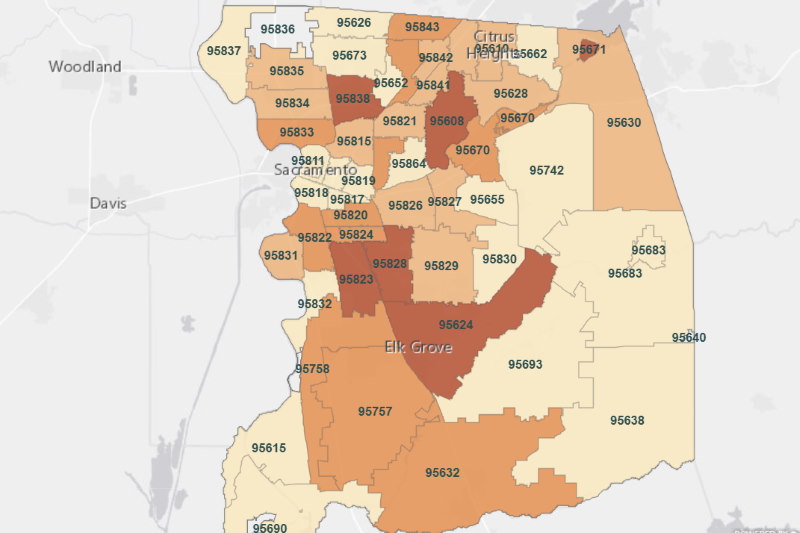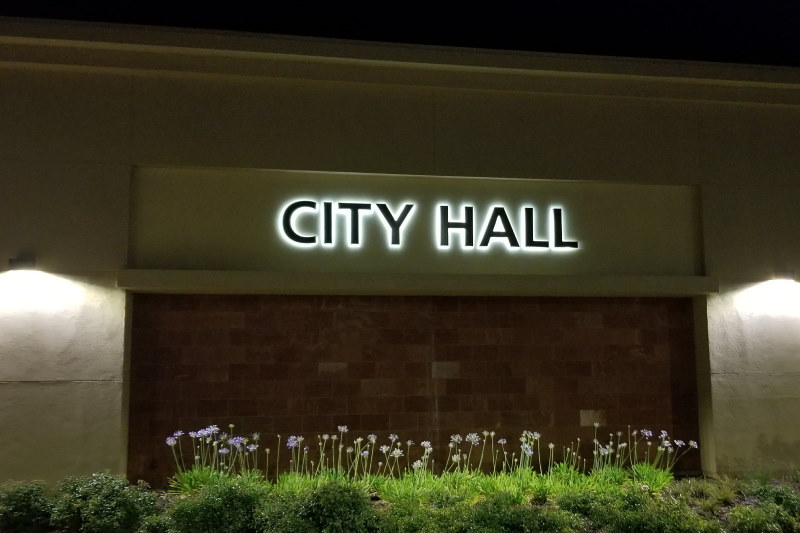
By Mike Hazlip—
State Assemblyman Kevin Kiley on Monday joined Sacramento County Supervisor Sue Frost and the Citrus Heights Chamber of Commerce at an outdoor event aimed at increasing support to reopen local small businesses.
The afternoon event was held in the parking lot next to R Vida Cantina on Sunrise Boulevard, with about two dozen people in attendance. Speakers also included business and real estate attorney Keith Dunnagan of BPE Law Group, as well as business owners. Audience members could be seen wearing masks and standing at least six feet apart.
Dunnagan said government has authority to act in the public interest during an emergency, but said that authority is not unchecked. He cited a number of court cases centered around the Fifth Amendment, which guarantees due process rights.
Assemblyman Kiley (R-Rocklin) criticized Gov. Gavin Newsom’s handling of the pandemic, saying his motives were political rather than science based. He claimed the shutdown orders have exposed what he called the state’s failed policies.
“I’m going to continue to fight to give small business owners the right to work and the right to be able to run their businesses in a safe and responsible way,” Kiley said, in an interview after the event. “I’m hopeful this recall we have going on will be a turning point for our state so we can start being on the side of small business.”
Green Acres on track to open new Citrus Heights location in March
Supervisor Frost, who has a medical background as a certified emergency nurse, called the state’s shutdown orders “unprecedented.” She said she’s asked the governor repeatedly for the data his administration is using to justify the continued shutdown, but said the effort has been unsuccessful.
“We’ve been told the data is either not available, complicated, hard to understand, or we get data that does not answer the question we asked,” she said.
Frost said recent data supports the idea that businesses can reopen safely and said the governor’s plans have helped big businesses and the tech industry, but have hurt small businesses.
“We’re being censored if we try to question or have conversation,” she said, claiming promotion efforts on social media have been shut down. “That is something I personally experienced with our very first project, Reopen Cal Now.”
Burger drive-thru to open next month in Citrus Heights
During an interview with The Sentinel after the event, Frost said medical professionals have contacted her asking for help in getting their message out.
“I’ve talked to a lot of medical professionals and what I’m hearing that is consistent is: ‘Sue, will you help us get this message out because the media will not cover it,’“ she said. “They’re battling censorship just like we are, and they’re also battling political pressure just like we are.”
Kevin Miles, one of the owners of R Vida Cantina who hosted the event, said he was grateful for the city’s Great Plates Delivered initiative last year that helped keep his business going, but once the program ended, he and his partners decided to open the restaurant indoors ahead of the governor’s Tier assignments.
Citrus Heights welcomes new restaurant amid pandemic shutdowns
“During this last shutdown, which was right around December, we made a business decision to stay open,” he said to audience applause. “Yes, we’re being very defiant, but when you put somebody in a corner, we have to survive at this point.”
Miles said restaurant staff are taking extra precautions to keep people safe by reducing capacity and seating guests further apart, as well as wearing masks.
Want to follow more exclusive local stories like this in Citrus Heights? Sign up free to get two emails a week with all local news and zero spam. Click here to sign up.
Advocates argue it is safe to reopen indoors with precautions like wearing masks, reducing capacity, and social distancing. Many business owners are willing to take additional cleaning measures in order to protect their customers.
The Sacramento County public health COVID-19 online dashboard currently reports over 91,000 total cases with 1,412 total deaths countywide. Data available from California’s COVID-19 dashboard shows individuals over age 65 represent over 10% of positive cases, but that same age group makes up over 74% of deaths statewide. Individuals in the 18 to 49 age group make up the majority of positive cases at just over 57% but only less than 6% of deaths.
The Sacramento Bee this week reported an overall decline in several key pandemic indicators in California, with new infections “now coming in at less than one-quarter of the winter peak rate, when nearly 41,000 cases were reported a day from New Year’s Eve to Jan. 13.” The two-week case rate is now less than 10,000 each day.
However, health officials are still concerned about new strains of the virus, including the B.1.1.7 variant. The new strain was confirmed by UC Davis health officials through their Healthy Davis Together community test operation this month.
Gov. Newsom has maintained that reopening businesses should be a decision driven by science. In a series of posts to Twitter beginning in April 2020, Newsom said the reopening plan shouldn’t be political, and emphasized the role of science in crafting public policy.
“CA is flattening the curve, but the reality is COVID19 is not going away soon. Our re-opening must be gradual, guided by public health and science, and will be done in (tiered stages),” he said.
Help make more local stories like this possible. Get unlimited access to local news with a subscription to The Sentinel. (See subscription options)










